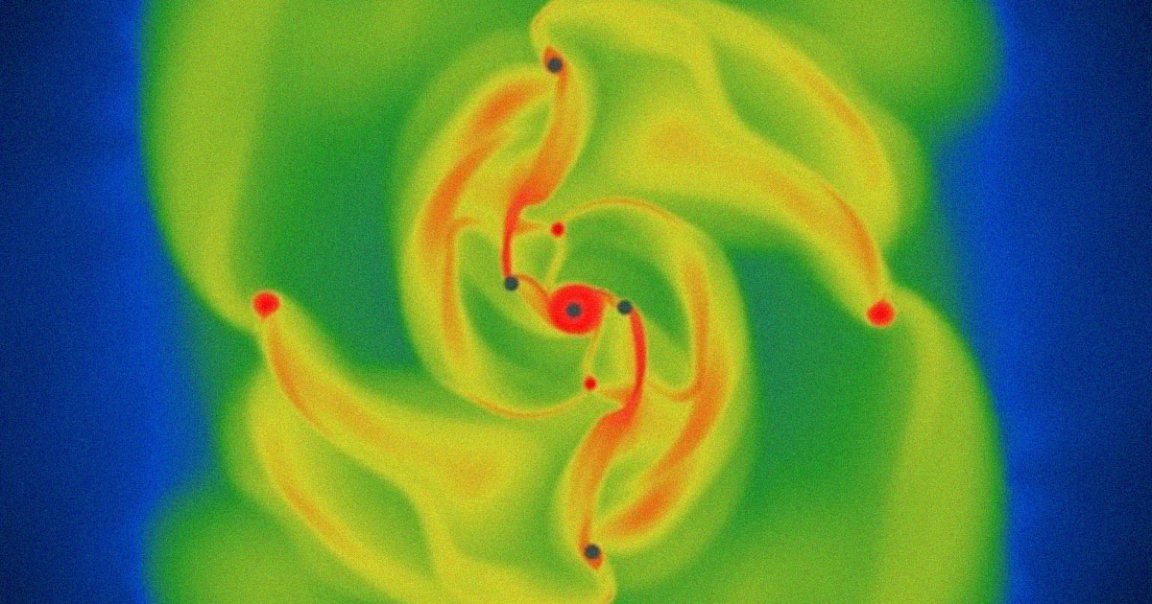
Flat Jupiter
Think of all planets as being spheres? It might not be that simple.
Using a supercomputer, a team of astrophysicists have simulated how gas giants like Jupiter grew in the first place — and have concluded that they likely had a flattened shape, kind of like an M&M, during its early days.
“We have been studying planet formation for a long time but never before had we thought to check the shape of the planets as they form in the simulations,” said University of Central Lancashire astrophysicist Dimitris Stamatellos, coauthor of a new paper to be published in the journal Astronomy & Astrophysics Letters, in a statement. “We had always assumed that they were spherical.”
“We were very surprised that they turned out to be oblate spheroids, pretty similar to smarties!” he added, referring to the popular chocolate confection that’s only available outside the US.
Oblate Spheroids
Despite the over 5,500 planets discovered in our Milky Way alone, scientists are still not entirely sure how they’re formed.
According to current theories, massive clouds of gas and dust circling stars start clumping together due to gravitational forces to form planets, comets, asteroids, and moons.
At least, that’s the case for small, rocky planets like Earth and Mars.
For gas giants the size of Jupiter and larger, scientists believe they’re formed by the “breaking up of large rotating protostellar discs around young stars in short timescales,” as lead author and recently graduated PhD student at the University of Central Lancashire Adam Fenton explained in the statement, a theory known as “disc-instability.”
“This theory is appealing due to the fact that large planets can form very quickly at large distances from their host star, explaining some exoplanet observations,” he added.
According to the team’s computer simulations, gas giant planets likely first form a flattened shape — or “oblate spheroids” — due to the centrifugal forces involved, and by having material mostly fall onto their poles rather than their equators.
The researchers argue we should take these findings into consideration during future observations of young planets. For one, the observed shape of an oblong object when viewed through a telescope could change depending on the viewing angle.
And that’s more important than ever, given the progress we’ve made when it comes to watching planets being born from many light-years away.
More on planet formation: Like Your First Quarantine Sourdough Attempt, This Exoplanet Is “Surprisingly Dense”